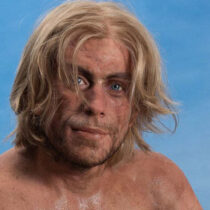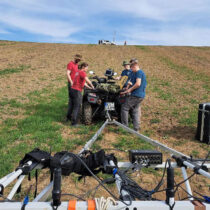Athletic games like boxing, wrestling and bull-leaping seem to have been indispensable to every religious feast in Minoan Crete. These games are often shown on ritual objects – found in special locations that have been considered as sanctuaries – like the conic, sotone rhyton (c. 1500 BC) from Agia Triada. Being a very characteristic example, it is decorated with scenes of boxing, wrestling and bull-leaping in relief. The most popular and hazardous game was bull-leaping, which in all probability originates from bull-catching. Various phases of the game are represented on the two famous golden cups from Vapheio, Laconia, on show at the National Museum. The numerous representations of bull-leaping in Minoan wall-painting and minor arts give us a clear picture of the actual game: the athletes participating (men and women) seized the running bull firmly by its horns and while the animal tried to toss off its human burden, they were launched in the air risking a jump over and across the back of the bull. The best representation of bull-leaping is the so-called ‘toreador fresco” (c. 1500 BC) in Knossos. It is not certain, however, whether this game bears any relation to modern Spanish bullfights. Bull-leaping, wrestling and boxing passed from the Minoan over to the Mycenaean world. Mycenaeans introduced, most probably, the race and chariot races to athletic games and were the first who organized athletic competitions on funerary occasions, events that are represented on funerary Mycenaean monuments and are so brilliantly described in the Homeric Poems.
Athletic games in Minoan Crete and Mycenaean Greece
27 Jul 2012
by Archaeology Newsroom
- A
- A
- A

